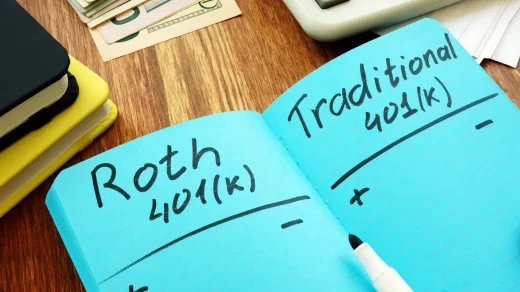Wash sale rules are designed to prevent you from taking “too much” advantage of temporary dips in the stock market to generate capital losses that you can deduct on your income tax return. Essentially, they are designed to keep you from selling at a low price to realize a loss, and then buying the same security right away. (Why would you do this? Maybe because you think the stock price is going to resume its upward trend, or maybe because you don’t want to mess with your overall portfolio allocation.)
The rules for wash sales are tricky. Put as simply as possible, if you sell a security at a loss, then if you buy “substantially identical” securities within 30 days before or after the loss-generating sale, then wash sale rules come into effect. And you can’t get around this by having your spouse buying the security back instead!
Here’s what IRS Publication 550 says:
A wash sale occurs when you sell or trade stock or securities at a loss and within 30 days before or after the sale you:
1. Buy substantially identical stock or securities,
2. Acquire substantially identical stock or securities in a fully taxable trade,
3. Acquire a contract or option to buy substantially identical stock or securities, or
4. Acquire substantially identical stock for your individual retirement arrangement (IRA) or Roth IRA.
If you sell stock and your spouse or a corporation you control buys substantially identical stock, you also have a wash sale.
There are several concepts to address, but let’s start with an example of a wash sale.
Wash Sale Example
Let’s say you sold 100 shares of an ETF at $1.00 per share on April 1. You originally paid $1.25 per share, so you have a loss of $25. You then buy 100 shares of the same ETF at $1.10 per share on April 15. Because you bought the same ETF again within 30 days of the sale, this means the sale on April 1 is a wash sale.
For income tax, purposes you will not be allowed to recognize $25 loss (100 shares x ($1.00/share purchase price – $0.50/share sale price) on the sale. All you are allowed to do is add the non-allowed loss of $25 to your basis in the shares you purchased on April 15, so your tax cost basis for those shares is $1,125 instead of $1,100. You will you use this adjusted basis to figure your gain or loss when you sell the second tranche of shares in the future.
Wash Sale Rules Are Tricky
This is a simple example, but it can get tricky very fast.
- What if you don’t always buy and sell the same number of shares? For example, maybe you sell 75 shares and then buy 125 shares that triggers a wash sale. You still have to treat the 75 shares sold as a wash sale.
- What if you sell shares in your taxable account and buy the same shares in your IRA? Even though the transactions are in different accounts, you still have a wash sale.
- What if you sell shares in your taxable account and your spouse buys them in another taxable account? Yep, that’s a wash sale.
How I Try To Avoid Wash Sales
When I sell shares, I am usually doing so in order to stick to my target allocation, harvest tax losses, or change investments (e.g., I want to buy another ETF in the same asset class because I think the new ETF is better than the one I own). But if I’m not paying attention, I can trigger a wash sale. So here are things I do to try to avoid buying a “substantially similar security.” I have no idea whether these pass muster with the IRS because the rules are murky.
I buy an ETF that tracks a different index. For example, the S&P 400 Mid Cap Index and the Russell Mid Cap Index are different mid-cap indices. An ETF that tracks one index will have different holdings than an ETF that tracks the other index.
I think broadly in asset classes. For example, if I sell an S&P 500 Index ETF, maybe I will buy a Total US Market ETF. Both ETFs are in the Large Blend asset class, but they have different holdings.
I buy a mutual fund to replace an ETF or vice versa. Mutual funds and ETFs are traded differently (at the end of the day for mutual funds versus throughout the day for ETFs). Even though the holdings may be similar, I like to think that this aspect means that they are not substantially similar.
Sheryl Rowling at Morningstar.com has a thorough and cautious approach that you may want to consider.
The simplest ways to avoid wash sales would be to sit on the cash from a sale for at least 30 days, or to buy something that is completely, plainly different from what you sell. But those methods will take you away from your target asset allocation for a period of time.
Keeping Track of Wash Sales
Luckily, your brokerage account must track wash sales for you. I use TD Ameritrade for my investments and they keep real-time track of wash sales throughout the year. However, they only track wash sales within the same account. If you have investing activity in multiple accounts that triggers wash sales, you need to track those carefully. This is where a good accountant can be helpful!




